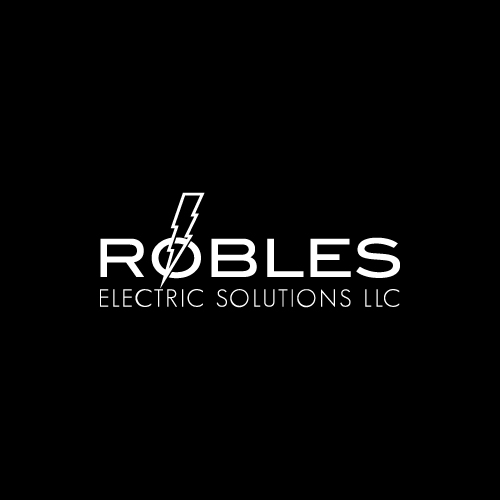There is so much that needs to be considered in web design to make it an effective marketing tool for your business. Your online presence needs to serve a purpose, whether that is to get more leads, build better brand recognition, or get a better grasp of your online demographic. Whatever the case, it boils down to marketing and/or how to better market to your customers. Here is a list of things that you need to consider when building your online presence.
Branding
This has to be unique. Something that sets you apart from your competition. Don’t arbitrarily pick a name and a logo, I can’t stress this enough, DO NOT RUSH THIS PROCESS. Finding the right name and logo needs to be a conscientious decision. This can take a while, so don’t overload your plate with too much before you nail this down. This process can take months.
“If you think hiring a professional is expensive, wait until you hire an amateur.”
This is a common mistake first-time business owners make. Usually, budgets are tight and thus the branding process is handed to friends or family who offer to do it free or cheap freelancers on the web. Like most things in life, you get what you pay for.
Professionals will usually provide unlimited revisions until you’re satisfied with the product and will then deliver every file necessary to integrate into your online presence. Look to spend at least $500 for a logo and $2500 for a branding package.
Picture this, you sell ornate picture frames for art and memorabilia. Your best selling products are beautiful hand crafted frames that lend to the beauty of the content inside. But your web design looks like it was built in 1995, there’s 4 or 5 different fonts that are too small to read, and your logo is blurry.
Do you want your customers to think you didn’t care enough to take the time to get your own image right? How are they supposed to believe you are going to take care in the details of their request when it looks like you don’t care enough about your own product?
The last thing you want to do is go through a rebranding scenario. You basically have to start all over again. New social media presence, new website, new business cards, new everything, not fun. In some cases, this can be a death blow.
Don’t Just Be Content With Your Content.
This is predicated on GREAT photography. “Okay,” or “so-so” images WILL NOT make an impact. This is especially true if you are selling something online. Great e-Commerce web design typically uses fantastic photography of the products. Can you even think of a site you purchased from that had terrible product photos?
Face it. Anyone can write an intriguing sentence about a product. That doesn’t make it true and if that product’s image is not intriguing or attractive, they aren’t going to read that sentence anyway. This isn’t specific to product images either. Don’t think you can use that Facebook image from 10 years ago on your “about me” page.
If it isn’t high resolution and inviting, it’s not valuable content. Look to replace it with professional shots. People make purchases with emotions and good imagery helps bring those feelings to the surface.
Be Social.
Look, I personally loathe social media and I know there are plenty of people out there that feel the same. However, you can not, I repeat CAN NOT, have a website without integrating social media platforms for your users to interact with. There are just too many people that use it for you to ignore. Some people these days use Facebook like Google search.
Don’t underestimate the power social media holds for your business online. This is an effective way to share your website content with specific groups of people who might be interested in what you have to say. If it is good, you need to make your page easy for your users to share over and over again.
Understand that it can be time-consuming to produce content to update those platforms as well. It’s really not difficult but if you don’t have the time now, what makes you think you’re going to have time later? Look into free tools to help manage this or hire an agency that specializes in Social Media Management so you can take that off your plate.
As social continues to evolve, marketing and advertising continue to change. In the past, people thought Google Adwords was the first option. Now it’s not uncommon for a brand to focus solely on social media advertising as a means of reaching new users, and it tends to be a lot cheaper. You have to go where your target demographic is the most.
Call Them To Action
I know what you are thinking, “I ALREADY HAVE CALL TO ACTION BUTTONS ON MY SITE!” Well, you’re reading this article so something is not working, right? So let us start with this.
Good web design directs users to perform tasks while on your site. Plopping a button down on your page does not, REPEAT, DOES NOT mean it will get clicked! So A/B test it!
DISCLAIMER: Be sure to check your current benchmarks before you start A/B testing, obviously.
Seriously though, tell your web designer to try placing that call to action on the left side of your page, and change the color to something more vibrant, maybe the button is too big and users are bouncing the site because all of a sudden the objective is not to provide valuable info, it is to sell them something.
It is going to be difficult and take some time, to zero in on cause and effect on the lack of interaction without data. This brings me to my final point….
Bring Data!
A website that does not produce droves of information about the people visiting it is not effective. Your site should be able to show you basic information about where your traffic is coming from, how much time they spent on your site, what they specifically clicked on your site, and literally hundreds of other variables that should be analyzed on a regular basis.
All that information paints a picture of who your customer is and what they are interested in. Once you have that information you can tailor your content to those users and grow your customer base online. It can also highlight issues with your website’s structure and layout.
Take your CTA for example. Let’s say you find that the time on the page where your CTA resides is low. SUPER LOW like less than 5 seconds. That right there should tell you there’s an issue either with the content or the structure. Either way, 5 seconds means your CTA is not interesting enough for them to A. stick around and read the content and, B. CLICK THE THING. Obviously, the user experience is suffering and it needs to be examined, and you would have no clue if your site is not set up to provide you with that information.
Believe it or not, having a website that accrues information about your customers will make your marketing and advertising efforts much more effective. Instead of guessing who your customers are, or where they come from, you’ll know exactly where you need to focus your ad dollars. This saves time and money and gives you the best chance to earn a return on your advertising investment. So, at a minimum, you can think of the investment on your website as a means of saving money in the marketing and advertising departments later on.
Wrapping it up, I know this article is probably a little different than what you are used to hearing when it comes to talking about your web design. But think about what you want your website to actually mean to your business. It should sell your business and raise the public’s view of your brand. Let me know your thoughts in the comment section below!









